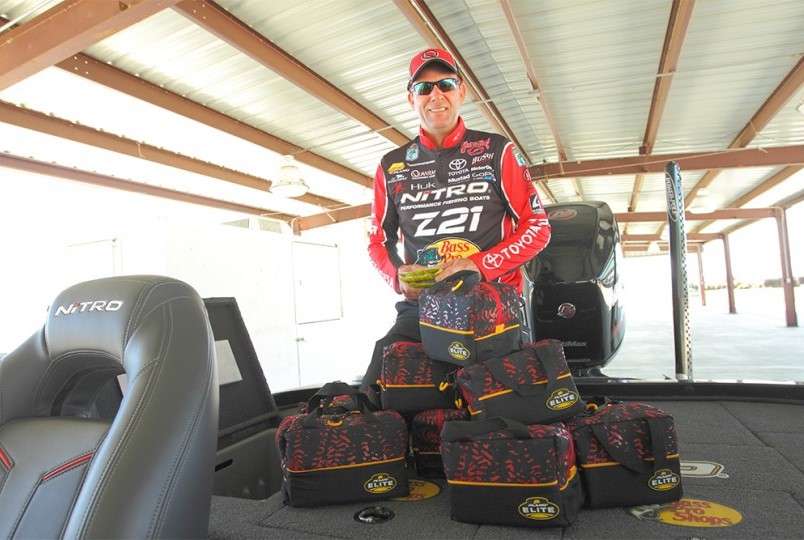
The first time I saw a stick worm I chuckled. There was no way a respectable bass would eat such a stupid looking soft plastic.
It didn’t take long to find out I was wrong. That seemingly do-nothing worm shows off its unique fish-catching attributes the minute it hits the water.
Stick worms – my favorite being the Strike King Ocho – have won a lot of tournaments and are baits anyone can use and catch fish.
Several companies make stick worms, but the best ones are loaded with salt. The salt enhances the tail’s subtle shimmy action while it sinks horizontally. That quivering tail is something the bass just can’t handle and why it’s really effective when there’s a lot of fishing pressure or a real tough bite.
Admittedly, it doesn’t fit my preferred style of power fishing, but I’ve learned the importance of slowing down and finesse fishing with stick worms. It’s not a bait I begin the day with, but it’s a top choice for going back through an area to clean up fish that didn’t want to bite the fast movers.
It’s such a versatile bait, too. You can flip it in and around brush, you can skip it under docks and pontoon boats or dunk it into deep weed pockets.
An unweighted Texas-rigged stick worm, or even a wacky rigged version, also provides a seductive fall that even fussy spawners can’t resist.
When I won at Cayuga Lake this year, I alternated between a Texas-rigged Ocho with a 1/8-ounce sinker and wacky rigged weightless model for shallow water.
The bait performs best in clear water where the shimmying tail really shines. On the other hand, I’ve caught bass at Winyah Bay by flipping a Texas-rigged version in dirty water.
Stick worms come in all sizes, but the most common length is 5 inches. In places where big bass live, like the St. John’s River where we fished earlier this year and Toledo Bend next year, the 6- and 7-inch versions come into play.
Strike King also makes a 4-inch that I use in clear water for ultra-finessing. I fish it with 8-pound fluorocarbon, either wacky style or on a drop shot.
Hook choices can be critical, too. Remember that a hook adds weight and affects the fall rate of the bait. If fishing around big bass with bigger line, I will use a heavier gauge hook; in clear water, where I want to slow the fall, I will use a fine wire hook with spinning tackle.
For Texas rigging, I use Mustad’s Grip Pin Hooks in either heavy or fine wire for holding Texas rigged plastics. I might go to a 1/0 for the 4-inch model and up to a 6/0 for the larger Ochos.
For wacky rigging, I use Mustad’s Double Wide Gap Drop Shot hook in No. 2 for the smaller Ochos and a 2/0 for the bigger, bulkier worms.
Some companies offer weedless hooks, but I like to make my own. I will create a loop with 40-pound monofilament to cover the hook and wrap the ends of the line on the hook shank with fly tying thread. It’s not perfect, but it helps protect the point when fishing around heavy cover.
I keep my lure colors pretty simple: watermelon, green pumpkin/gold/purple or honey candy for clear water and black/blue or June bug for stained water. If the fish are feeding on shad, I like ghost shad or glacier, especially for drop shotting stick worms.
So, the next time the bite is tough, dig out a bag of stick worms and start experimenting. You’re almost guaranteed to get some bites.
Remember, it’s all about the attitude!
Kevin VanDam’s column appears weekly on Bassmaster.com. You can also find him on Facebook, Twitter and Instagram.

